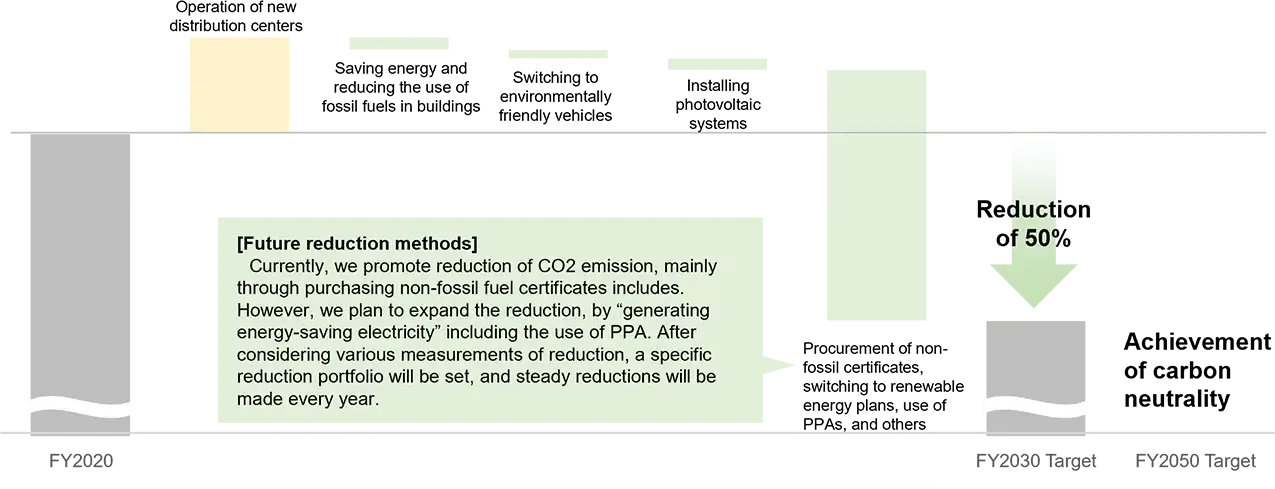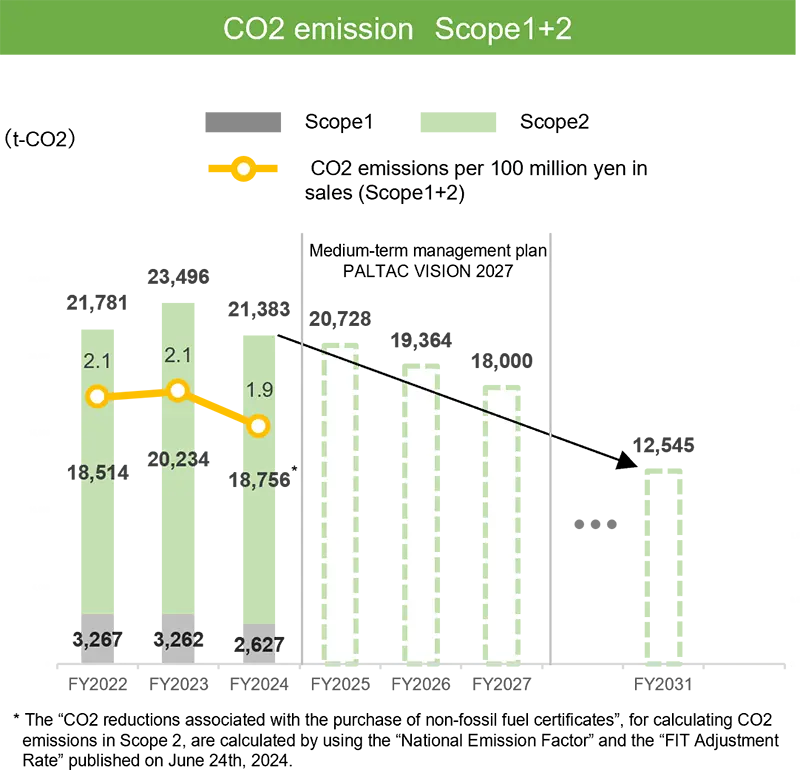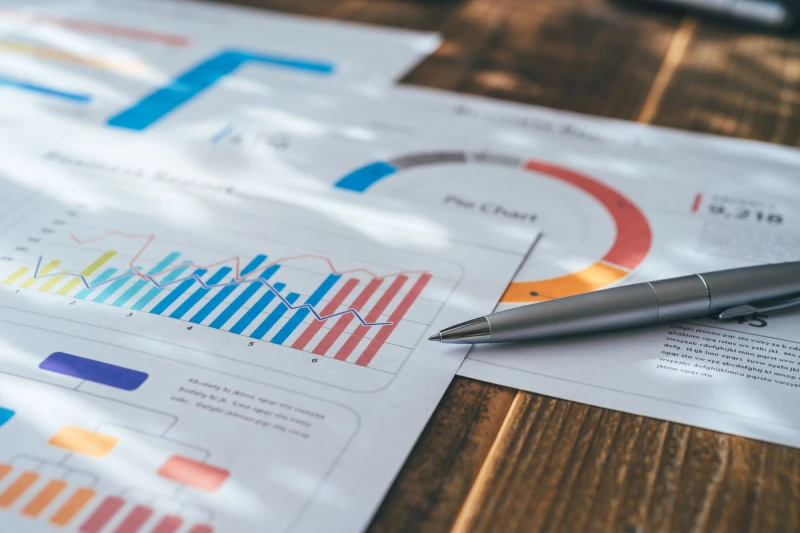Disclosure of Information Based on TCFD Recommendations
PALTAC recognizes that climate change is an issue that needs to be addressed by the entire world, and that the distribution of daily necessities is an important industry-wide issue that needs to be addressed as well, such as the threat to stable supply due to extreme weather events. PALTAC considers climate change and other environmental social issues to be one of the most important sections to be resolved in order to achieve sustainable growth, and we are taking steps to address these issues by incorporating them into our medium- and long-term strategies. Specifically, as part of our mission of "optimizing and streamlining the entire supply chain," we are working to reduce our environmental impact through our business activities, such as reducing CO2 emissions by improving delivery efficiency and promoting the development and sale of environmentally friendly products, as well as promoting energy-saving measures and procurement of renewable energy-derived electricity. In addition, we are promoting energy-saving measures and procurement of renewable energy-derived electricity.
In the future, we will further strengthen our response to climate change, including these initiatives, and will continue to identify and assess risks and opportunities for our business due to climate change, and promote our response to these risks and opportunities. At the same time, we will strive to improve the level of our initiatives and enhance information disclosure through dialogue with our stakeholders.
Governance
At PALTAC, we are promoting company-wide initiatives centered on the Sustainability Project, which was established under the direct supervision and direction of the Representative Director and President, with the aim of taking appropriate action in response to climate change. The Sustainability Project identifies risks and opportunities related to climate change that may affect our business activities, and formulates policies for responding to these. The CSR Promotion Headquarters, which serves as the secretariat for the project, regularly reports the results of these activities to the Board of Directors, which then manages and supervises the content of these reports.
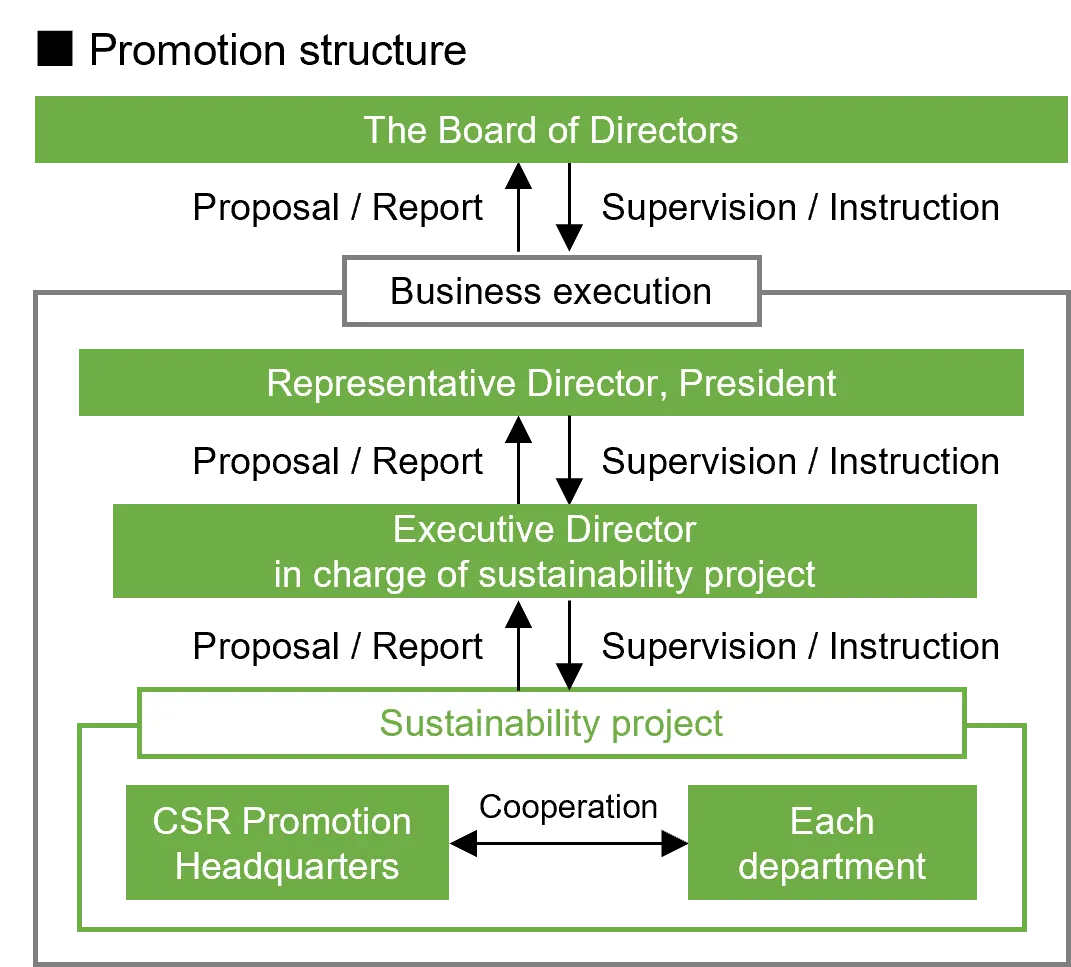
Risk Management
PALTAC has established "Basic Rules for Risk Management" with the aim of fulfilling its corporate social responsibility by appropriately responding to risk factors that may exist in the execution of its business in order to achieve its management objectives. The CSR Promotion Headquarters, which is in charge of risk management, plays a central role in the risk management system, collaborating with management and various departments to identify and analyze risks that may affect business operations, including climate-related risks and other sustainability-related risks, evaluate their significance based on the degree of impact and likelihood of occurrence, and formulate response policies. We also formulate policies to respond to these risks. The "material risks" identified through these processes are regularly reported to the Board of Directors, which manages and supervises them, and incorporates them into the strategies of the Medium-term Management Plan to address them.
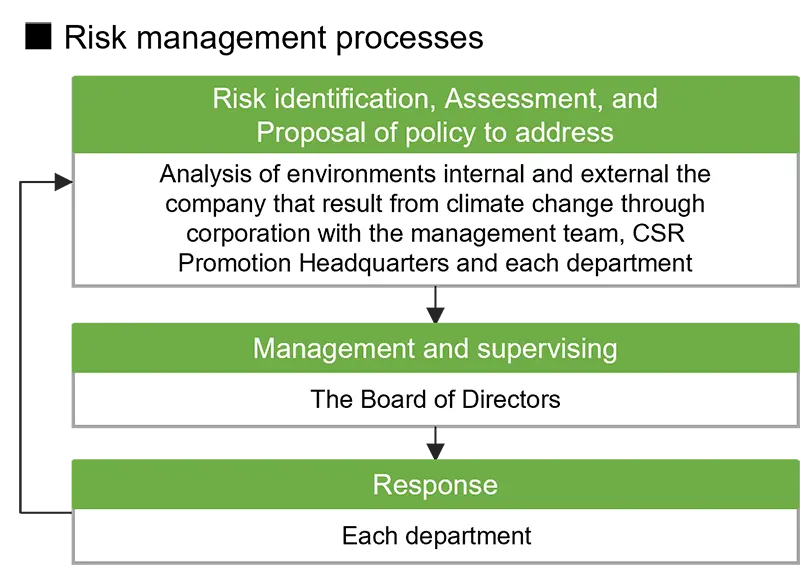
Strategy
With the aim of assessing the business impact of different scenarios (<2°C, 4°C) and evaluating the resilience of our strategy to climate-related risks and opportunities, we refer to multiple scenarios published by the International Energy Agency (IEA) and the Intergovernmental Panel on Climate Change (IPCC), We analyzed the impact of climate change in the year 2030.
Under the 4°C scenario, the main risk is damage to supply chains due to natural disasters. However, we have been formulating an effective BCP that assumes various risks such as large-scale disasters since normal times, and as one of such measures, we have a backup system in place to supplement deliveries from other centers even if one of our centers is damaged and becomes unable to ship.
Therefore, we believe that the impact of physical risks from natural disasters as of 2030 will not be significant.
On the other hand, in terms of opportunities, we have recognized that demand for summer goods and disaster-preparedness merchandise is expected to increase in line with rising temperatures. In both scenarios, we expect to face increasing pressure from rising costs. While this is a risk, we also see it as an opportunity to take advantage of the low-cost and highly efficient logistics network, which is Our strengths that we have built. The industry is facing pressing issues such as labor shortages at stores and a shortage of delivery drivers, and there is also increasing upward pressure on costs due to factors other than climate change. In this environment, we believe that how efficiently we can establish a distribution system will determine our ability to achieve sustainable growth. We are working to optimize and improve the efficiency of the entire supply chain through strengthening the intermediate distribution function and working with stakeholders.
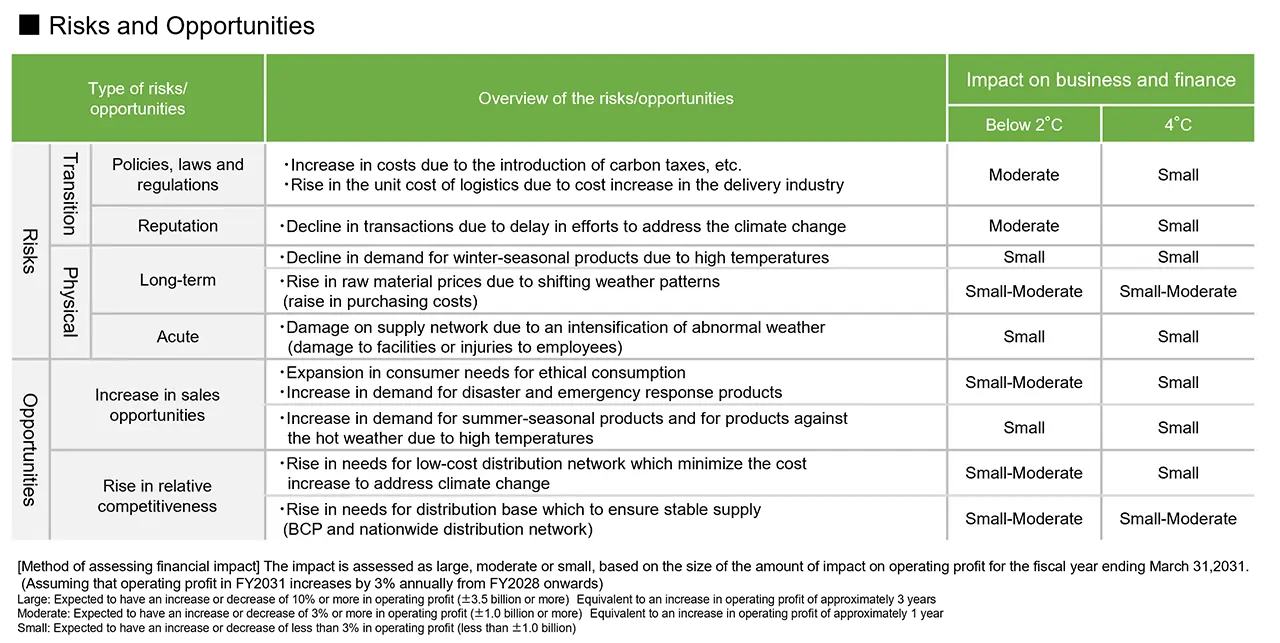
Indicators and Targets
In order to contribute to the realization of a temperature rise of less than 2°C by the end of the century, we have set targets for Scope 1 and 2 of a 50% reduction in CO2 emissions by FY2030 compared to FY2020, and virtually zero emissions by FY2050. However, since we cannot stop shipping products, it is necessary to reduce emissions even though we cannot drastically reduce electricity consumption. We are planning to procure renewable energy electricity by purchasing environmental certificates and switching to a renewable energy power plan. We will steadily reduce the ratio of renewable energy to procured electricity by setting annual targets.
In addition, we will thoroughly implement and expand energy-saving measures, such as electricity conservation at offices and distribution centers, and promote more effective efforts to "reduce" emissions in order to cut costs and improve the workplace environment. In addition to accelerating existing businesses' efforts to improve delivery efficiency, we will expand the scope of our efforts through cooperation and collaboration with our suppliers to reduce CO2 emissions through our business activities. In other categories, we will strive to improve the accuracy of CO2 emissions calculations and calculations, taking into account the degree of relevance to our business, and will investigate and gather information on potential reductions and take action in turn.
Roadmap for Achieving Reduction Targets for FY2030
